Evaluation of Stress Corrosion Cracking Susceptibility of 2195-T8 Al-Li Alloy in Propellant Environment Using Slow Strain Rate Testing
Abstract
1. Introduction
2. Experimental Section
2.1. Sample Preparation
2.2. Microstructure
2.3. Polarization Curve Test
2.4. SSRT
3. Results and Analysis
3.1. Micro-Morphology
3.2. Electrochemical Test Results
3.3. SSRT Tests
3.3.1. Different Strain Rates
3.3.2. Different ω(H2O)N2O4 Contents
3.4. Stress Corrosion Susceptibility
3.4.1. Effect of Tensile Rate on ISCC
3.4.2. Effect of ω(H2O) on ISCC
3.5. Stress Corrosion Rupture Mechanism
4. Conclusions
- (1)
- The electrochemical corrosion rate of the 2195-T8Al-Li alloy in N2O4 increased with the water content ω(H2O) rising from 2% to 4%. Correspondingly, the corrosion morphology evolved from localized pitting and intergranular corrosion to widespread exfoliation corrosion over the surface.
- (2)
- The alloy exhibits significant SCC susceptibility in N2O4 medium at a tensile rate of ε ≥ 5 × 10−6 s−1. However, when the tensile rate is reduced to ε = 10−6 s−1, the susceptibility to ISCC decreases markedly. Under these conditions, extensive surface oxidation is observed, and the fracture morphology exhibits intergranular characteristics. These findings suggest that the SCC mechanism is primarily attributable to anodic dissolution.
- (3)
- When the strain rate is 10−6 s−1, the SCC susceptibility of the alloy in N2O4 media containing varying water concentrations (ω(H2O)) increases progressively with rising ω(H2O). This enhanced SCC susceptibility is attributed to the combined effects of anodic oxidation and hydrogen embrittlement. As the production of HNO3 and HNO2 increases, it accelerates anodic dissolution. Concurrently, hydrogen generated from the cathodic reaction diffuses to the crack tip, leading to embrittlement and further promoting SCC initiation and propagation.
- (4)
- To enhance the long-term storage safety and stability of liquid propellant tanks, ensure the operational performance of liquid-fueled missiles, and effectively prevent safety incidents such as propellant leakage caused by stress corrosion cracking in liquid propellant tanks, it is crucial during the long-term storage process to maintain the storage environment at room temperature and dry, preventing an increase in the water content of the propellant. Additionally, anti-corrosion treatment should be applied to the surface of aluminum–lithium alloys to effectively isolate them from corrosive medium.
Author Contributions
Funding
Data Availability Statement
Conflicts of Interest
References
- Dai, W.; Jiang, Y.; Yao, J.; Wang, Y.; Cao, F. Simultaneously improving the strength and ductility of an Ag-free 2195 Al-Li alloy by T8 treatment with cryogenic pre-rolling. J. Alloys Compd. 2024, 976, 173214. [Google Scholar] [CrossRef]
- Chen, Q.; Zhu, X.; Jiang, Y.; Yang, L.; Liu, H.H.; Song, Z. Development and characterization of MAO/PLA-nHA nanocomposite coatings on pure zinc for orthopedic applications. Surf. Coat. Technol. 2024, 478, 130452. [Google Scholar] [CrossRef]
- Dursun, T.; Soutis, C. Recent developments in advanced aircraft aluminum alloys. Mater. Des. 2014, 56, 862–871. [Google Scholar] [CrossRef]
- Guo, Y.; Chang, X.; Tian, G.; Liu, D.J.; Pang, C.; Wu, W. Pre-corrosion fatigue behavior of 2195-T8 Al-Li alloy in N2O4 under tension-tension loading. Rare Met. Mater. Eng. 2022, 51, 3459–3465. [Google Scholar]
- NASA. Spacecraft Polymers Atomic Oxygen Durability Handbook: NASA-HDBK-6024; NASA: Washington, DC, USA, 2022. [Google Scholar]
- European Space Agency. Material Compatibility Testing of AA2195 with N2O4 for Vega-E Upper Stage: ESA-TR-2022–007; ESA: Noordwijk, The Netherlands, 2022. [Google Scholar]
- Yao, X.Q.; Wen, L.; Yu, Z.G.; Guo, W.; Huang, F.; Qiang, Y.; Jin, Y. Study on corrosion behavior and mechanism of 5A06 aluminum alloy in N2O4 medium. J. Alloys Compd. 2023, 931, 167544. [Google Scholar] [CrossRef]
- Li, J.F.; Ning, H.; Liu, D.Y.; Zheng, Z.Q. Alloying and micro-alloying in Al-Cu-Li series alloys. Chin. J. Nonferrous Met. 2021, 31, 258–279. [Google Scholar]
- Ma, Y.L.; Li, J.F.; Zhang, R.Z.; Ning, H.; Liu, D.Y.; Xiong, B.Q. Correlation of mechanical properties and microstructure of 2195 Al-Li alloy with hot extrusion and cold rolling processes. Trans. Nonferrous Met. Soc. China 2020, 30, 835–849. [Google Scholar] [CrossRef]
- Zhang, X.; Gong, Z.; Huang, J.; Yu, B. Thermal shock resistance of tungsten with various deformation degrees under transient high heat flux. Mater. Res. Express 2020, 7, 066503. [Google Scholar] [CrossRef]
- Henthorne, M. The slow strain rate stress corrosion cracking test—A 50 year retrospective. Corrosion 2016, 72, 1488–1518. [Google Scholar] [CrossRef]
- Ghosh, R.; Venugopal, A.; Narayanan, P.R.; Sharma, S.C.; Venkitakrishnan, P.V. Environmentally assisted cracking resistance of Al-Cu-Li alloy AA2195 using slow strain rate test in 3.5% NaCl solution. Trans. Nonferrous Met. Soc. China 2017, 27, 241–249. [Google Scholar] [CrossRef]
- Hu, W.S.; Meletis, E.I. Corrosion and Environment-Assisted Cracking Behavior of Friction Stir Welded Al 2195 and Al 2219 Alloys. Mater. Sci. Forum 2000, 331−337, 1683–1688. [Google Scholar] [CrossRef]
- Goebel, J.; Ghidini, T.; Graham, A.J. Stress-Corrosion cracking characterization of the advanced aerospace Al-Li 2099-T86 alloy. Mater. Sci. Eng. A 2016, 673, 16–23. [Google Scholar] [CrossRef]
- Commission of Science, Technology and Industry for National Defense. Specification for Nitrogen Tetroxide; Commission of Science, Technology and Industry for National Defense: Beijing, China, 1994. [Google Scholar]
- Philips, N.R.; Carl, M.; Cunningham, N.J. New Opportunities in Refractory Alloys. Metall. Mater. Trans. A 2020, 51, 3299–3310. [Google Scholar] [CrossRef]
- Li, J.F.; Huang, J.L.; Liu, D.Y.; Ning, H.; Zhang, J.S.; Xiong, B.Q. Distribution and evolution of aging precipitates in Al-Cu-Li alloy with high Li concentration. Trans. Nonferrous Met. Soc. China 2019, 29, 15–24. [Google Scholar] [CrossRef]
- Araujo, J.V.d.S.; Milagre, M.X.; Ferreira, R.O.; Machado, C.A.S.C.; Bugarin, A.F.S.; Machado, I.F.; Costa, I. Exfoliation and intergranular corrosion resistance of the 2198 Al-Cu-Li alloy with different thermomechanical treatments. Mater. Corros. 2020, 71, 1957–1970. [Google Scholar] [CrossRef]
- Guo, Y.; Huang, Z.Y.; Tian, G.; Liu, D.J.; Jin, G.F.; Guo, X.W. Isomerization and reaction process of N2O4(H2O)n. RSC Adv. 2023, 13, 12469–12475. [Google Scholar] [CrossRef]
- Liu, D.J.; Tian, G.; Jin, G.F.; Guo, Y.; Guo, X.W.; Chang, X.T. Characterization of localized corrosion pathways in 2195-T8 Al-Li alloys exposed to acidic solution. Def. Technol. 2023, 25, 152–165. [Google Scholar] [CrossRef]
- Lin, Y.; Lu, C.; Wei, C.; Zhender, Z. Effect of aging treatment on microstructures, tensile properties and intergranular corrosion behavior of Al-Cu-Li alloy. Mater. Charact. 2018, 141, 163–168. [Google Scholar] [CrossRef]
- Wang, B.; Wang, Z.; Yuan, J.; Yin, Z. Effect of (Ti,W)C/TaC addition on the early oxidation behavior of surface layer of WC-Co cemented carbides. Corros. Sci. 2020, 176, 108857. [Google Scholar] [CrossRef]
- Zhang, A.A.; He, J.J.; Liu, T.J.; Zhang, W.F. Electrochemical features of corrosion of 5A06 Al-Mg alloy in seawater. Acta Aeronaut. Astronaut. Sin. 2015, 36, 3147–3154. [Google Scholar]
- Huang, X.M.; Zang, Y.; Guan, B. Research progress on hot forming of aeronautical Al-Li alloys. Rare Met. Mater. Eng. 2022, 51, 4745–4756. [Google Scholar]
- De, P.S.; Mishra, R.S.; Baumann, J.A. Characterization of high cycle fatigue behavior of a new generation aluminum lithium alloy. Acta Mater. 2011, 59, 5946–5960. [Google Scholar] [CrossRef]
- Li, H.R.; Zou, Z.T.; Li, J.F.; Ning, H.; Liu, D.Y.; Xiong, B.Q. Relationship between grain structure and tensile properties of Al-Li alloys. Trans. Nonferrous Met. Soc. China 2023, 33, 3597–3611. [Google Scholar] [CrossRef]
- Qin, M.; Su, H.; Wu, W.; Wu, J.; Liu, H.; Tan, Y.; Yan, M. Comparison of H2S high-temperature corrosion characteristics of three kinds of low-alloy and heat-resistant-steel tubes. Corros. Eng. Sci. Technol. 2021, 56, 289–298. [Google Scholar] [CrossRef]
- Brown, L.B.; Jones, R.E. Effect of low temperature, low water vapor pressure environments on the fatigue behavior of an Al-Li aerospace alloy. Int. J. Fatigue 2021, 148, 106215. [Google Scholar] [CrossRef]
- Li, W.; Xiang, L.; Wu, G.H.; Si, H.P.; Chen, J.; Jin, Y.; Su, Y.; Tao, J.; Huang, C. Predict the evolution of mechanical property of Al-Li alloys in a marine environment. Def. Technol. 2022, 31, 557–566. [Google Scholar] [CrossRef]
- Liu, Z.; Zhang, L.-M.; Liu, C.C.; Tan, K.D.; Ma, A.L.; Zheng, Y.G. Understanding of tribocorrosion and corrosion characteristics of 304L stainless steel in hot concentrated nitric acid solution. J. Central South Univ. 2024, 31, 3657–3673. [Google Scholar] [CrossRef]
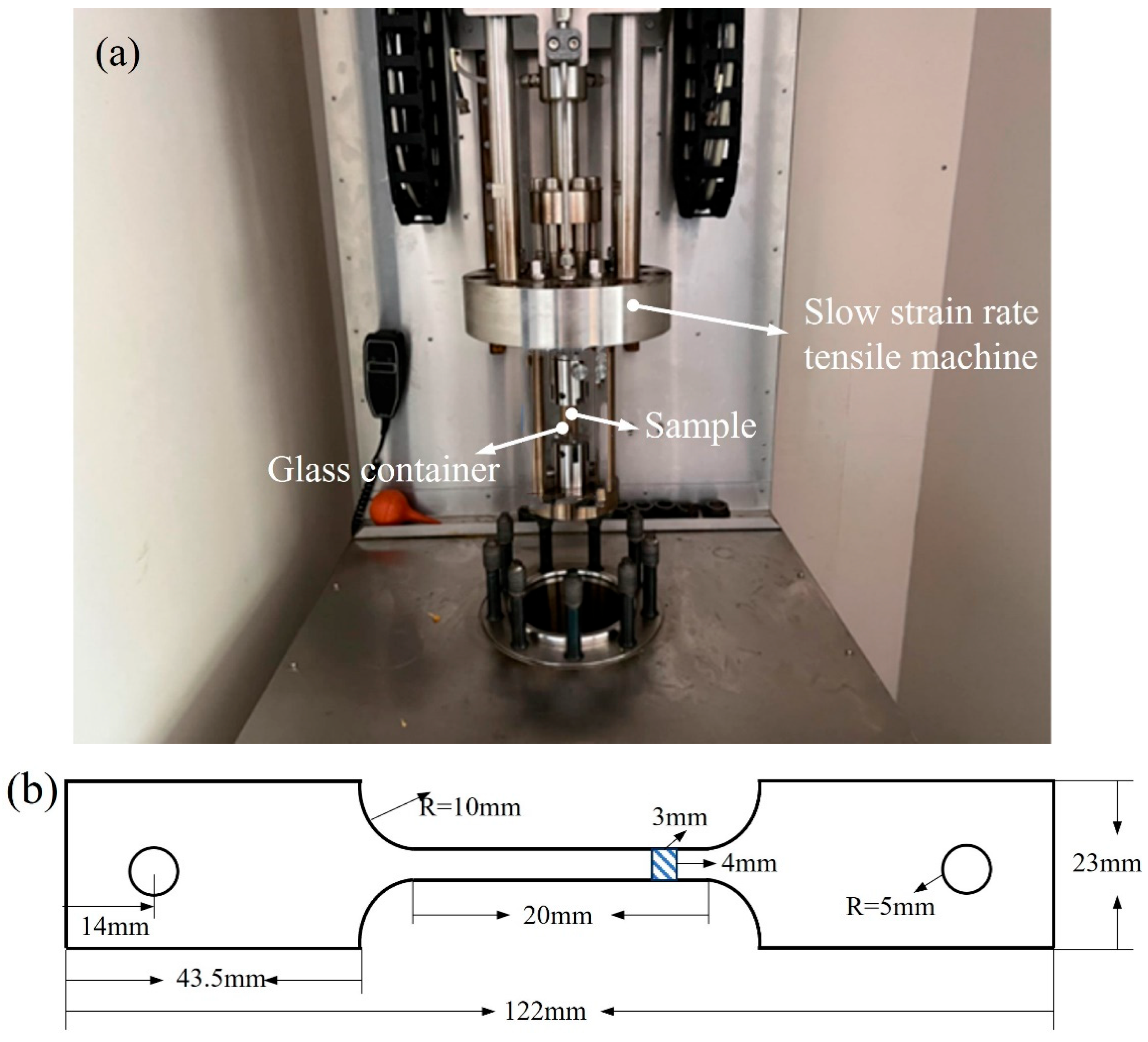
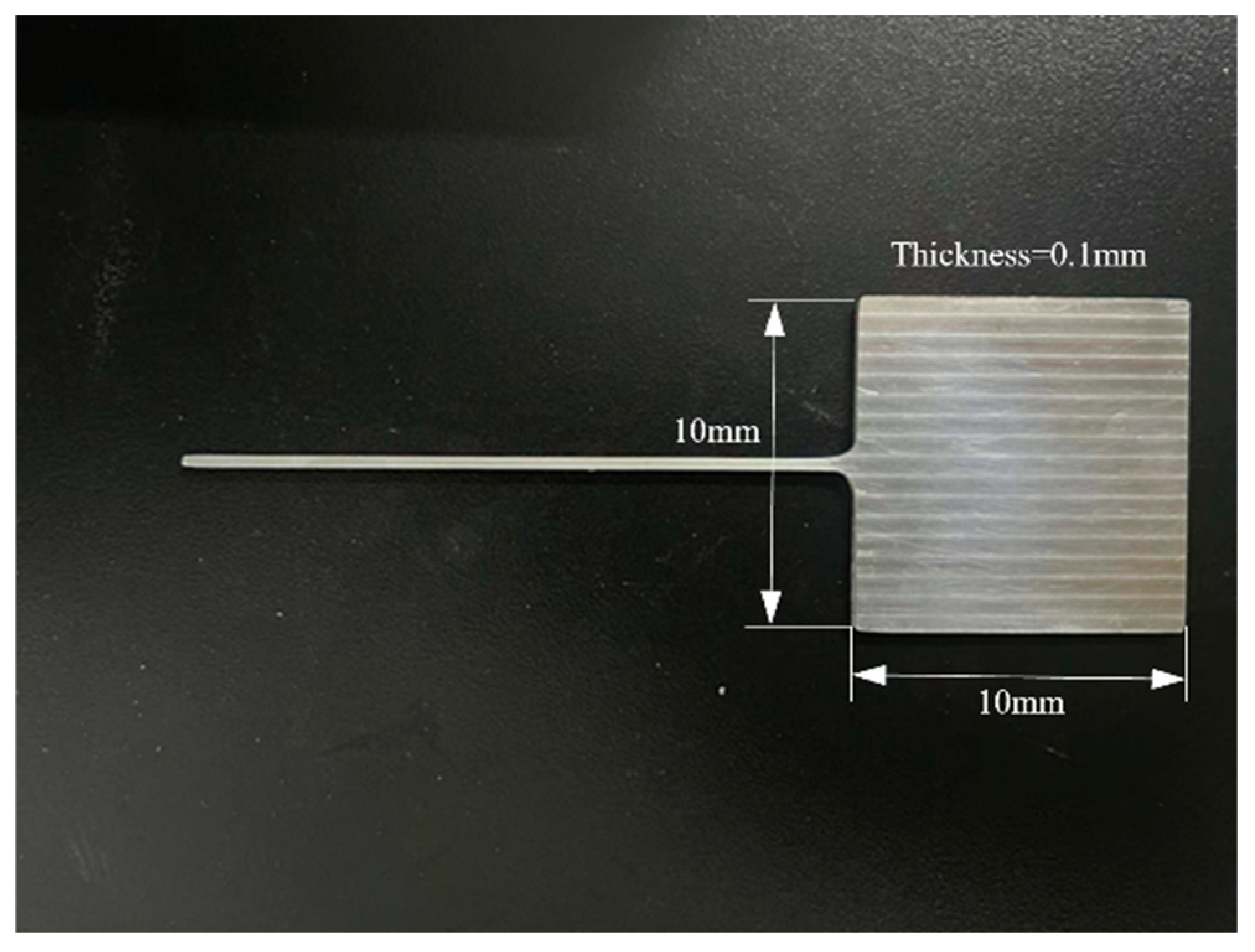
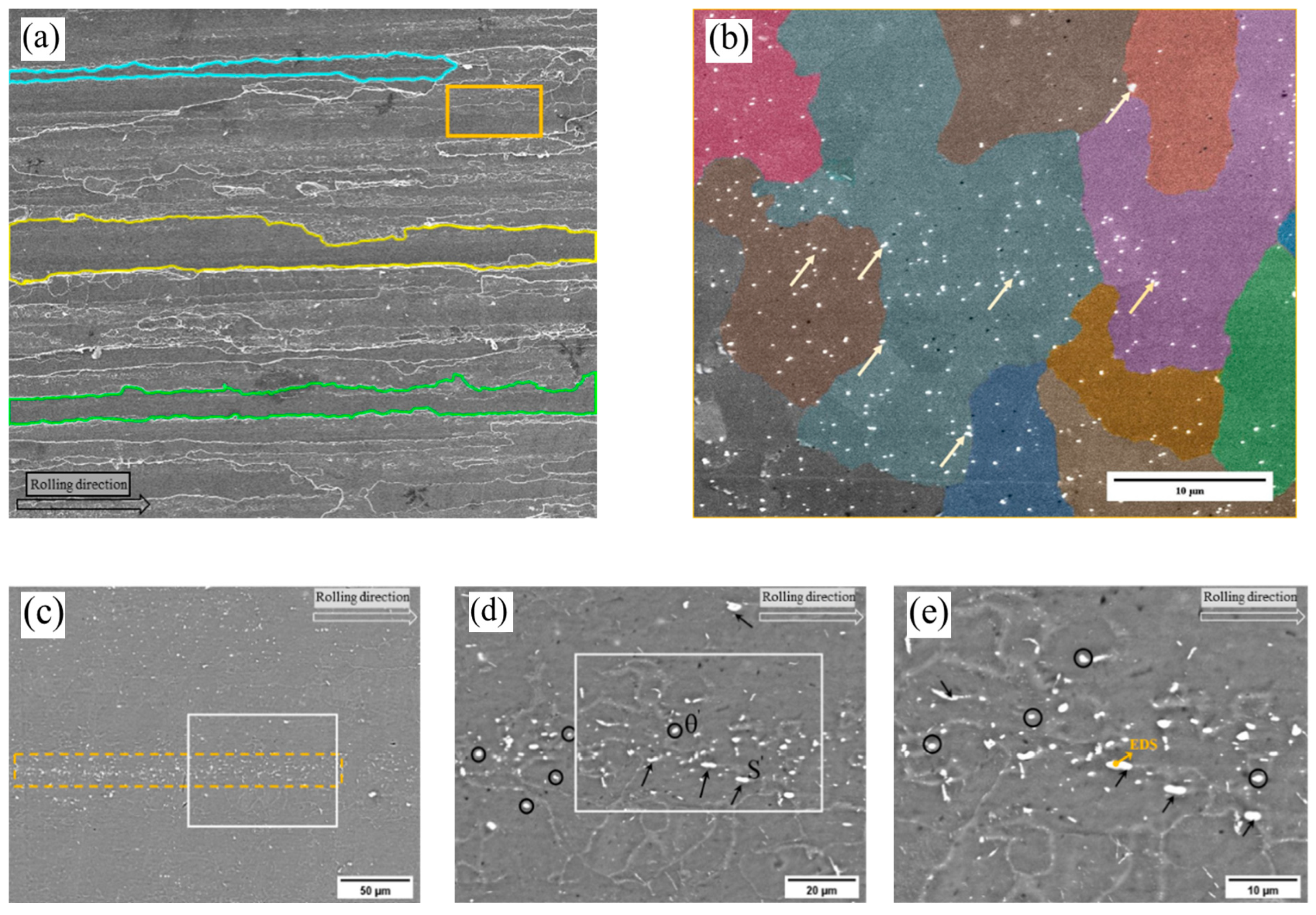

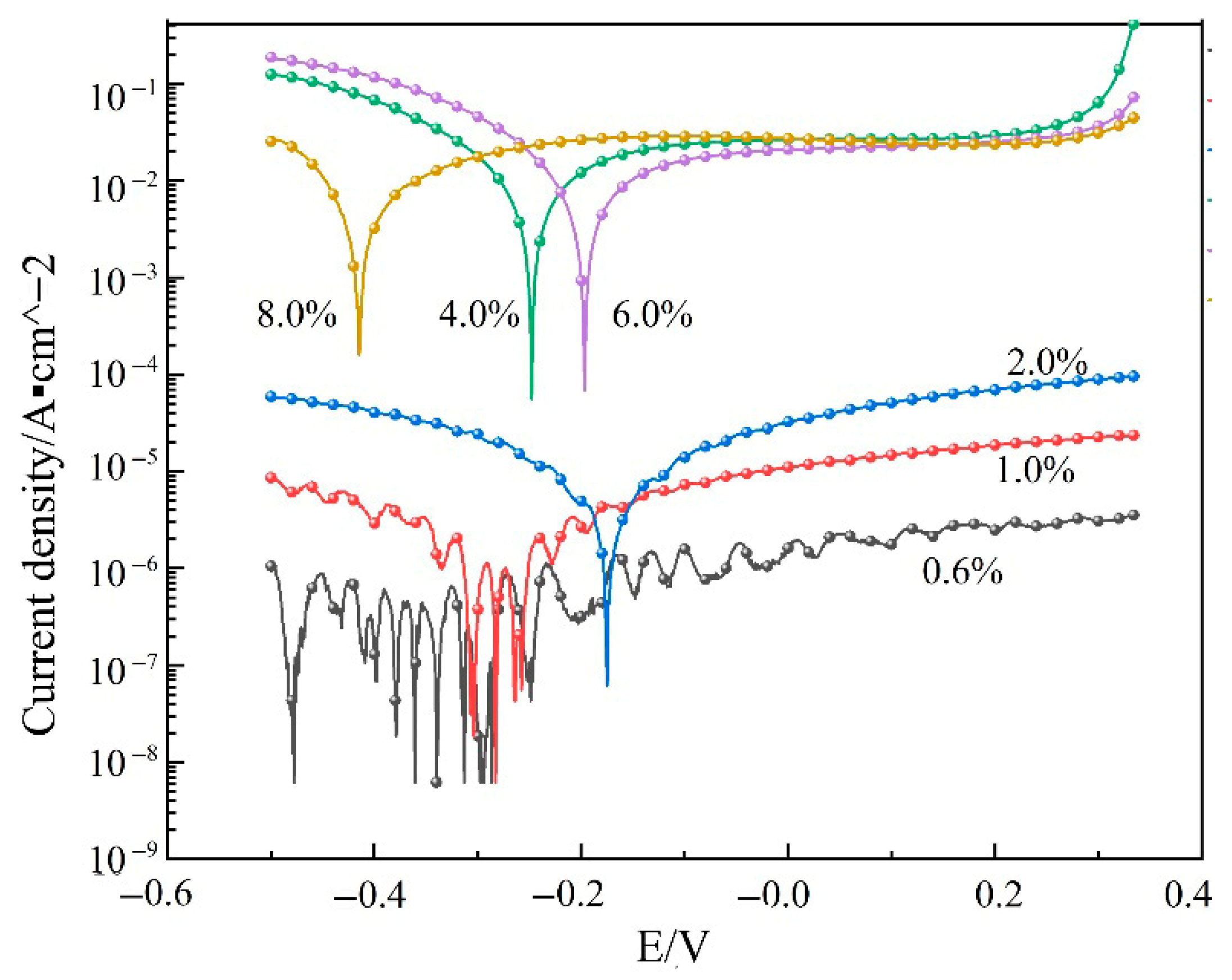
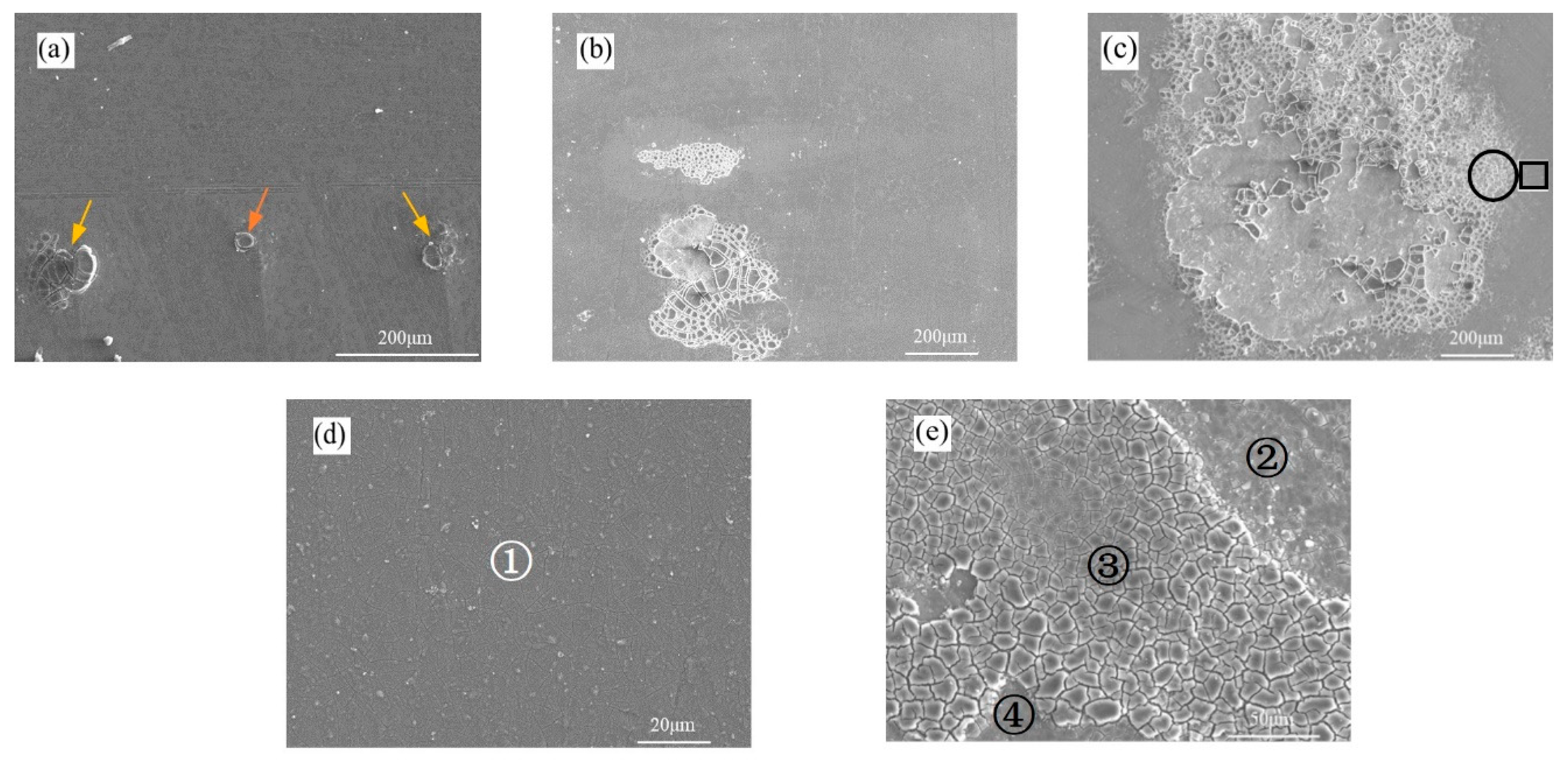
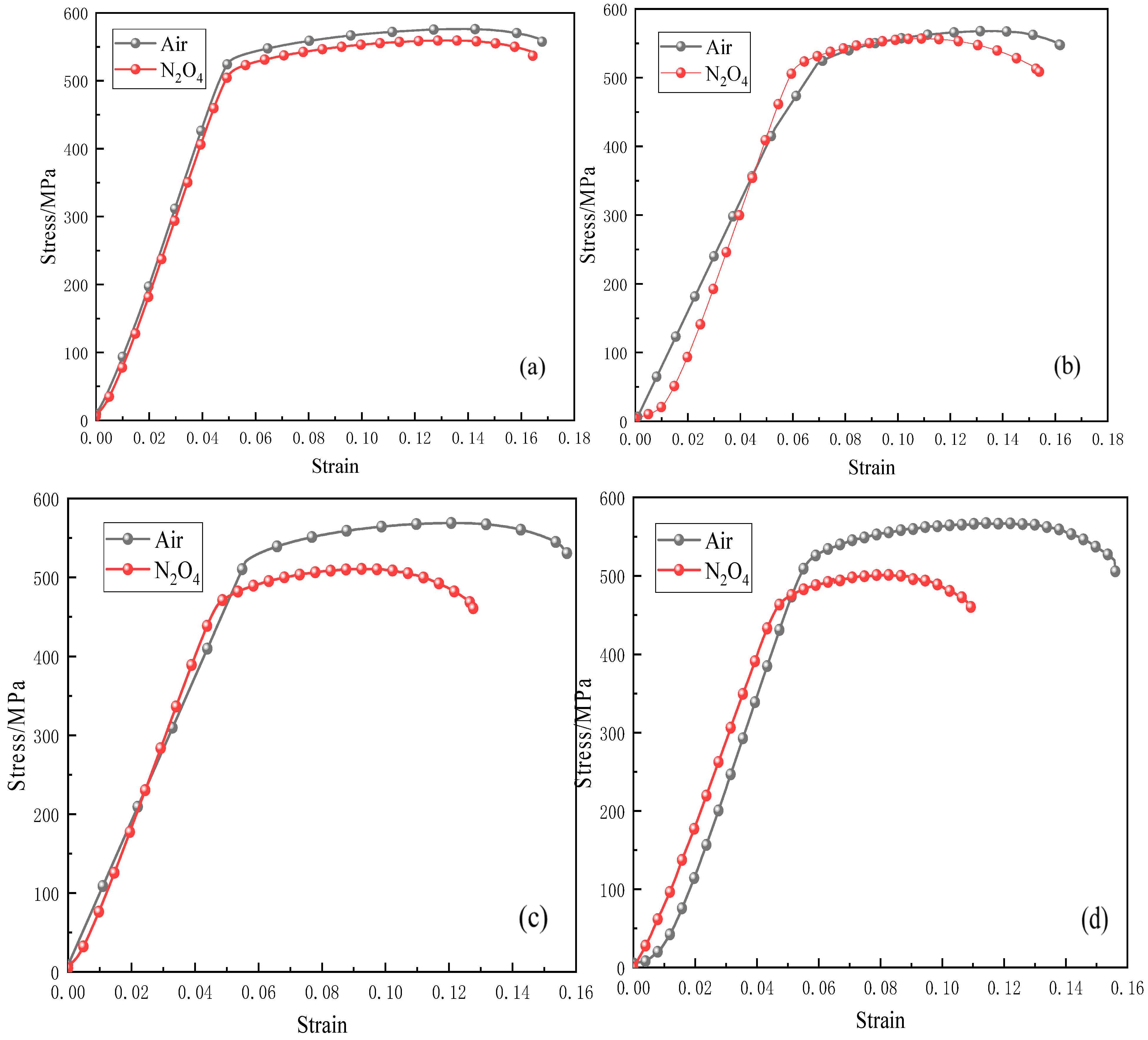
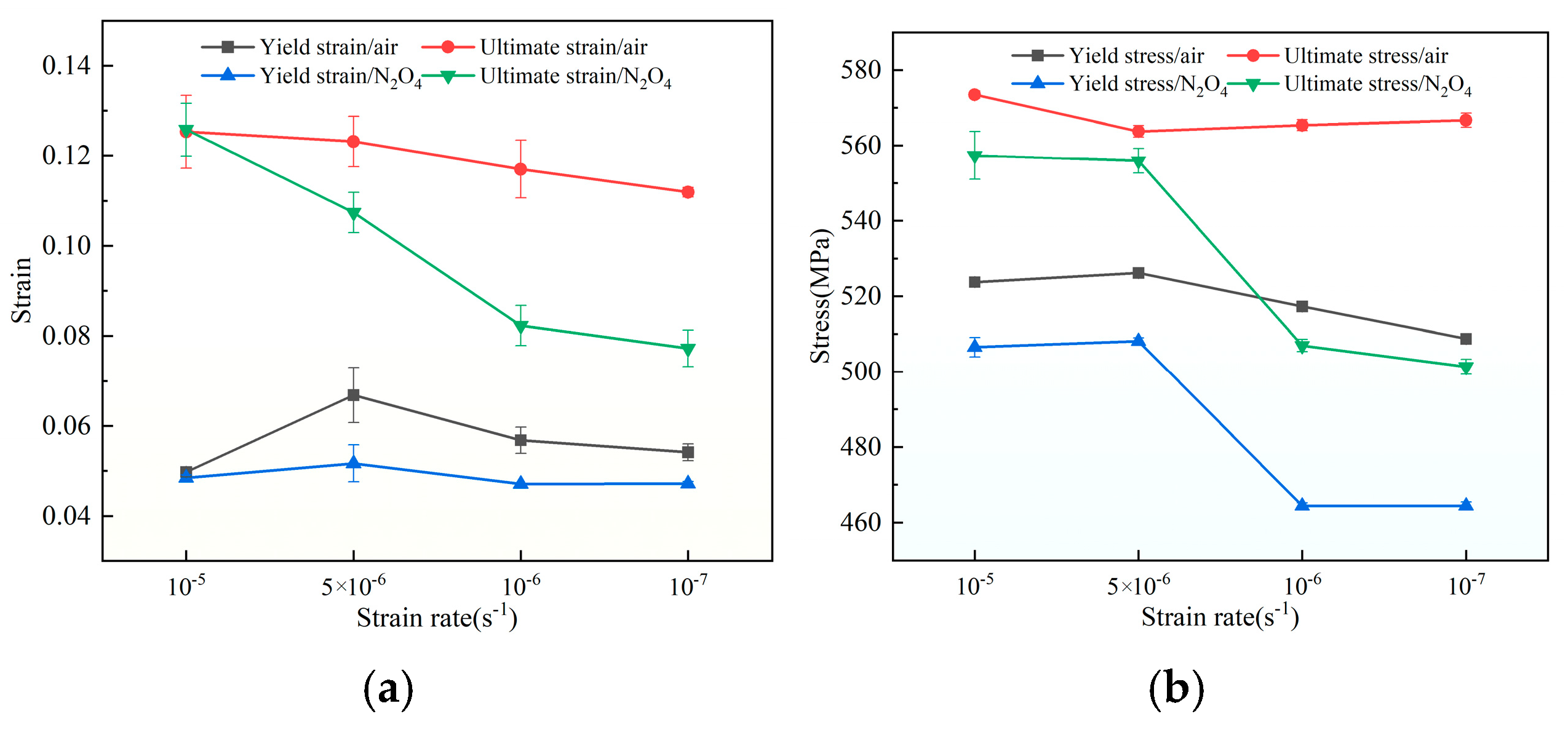
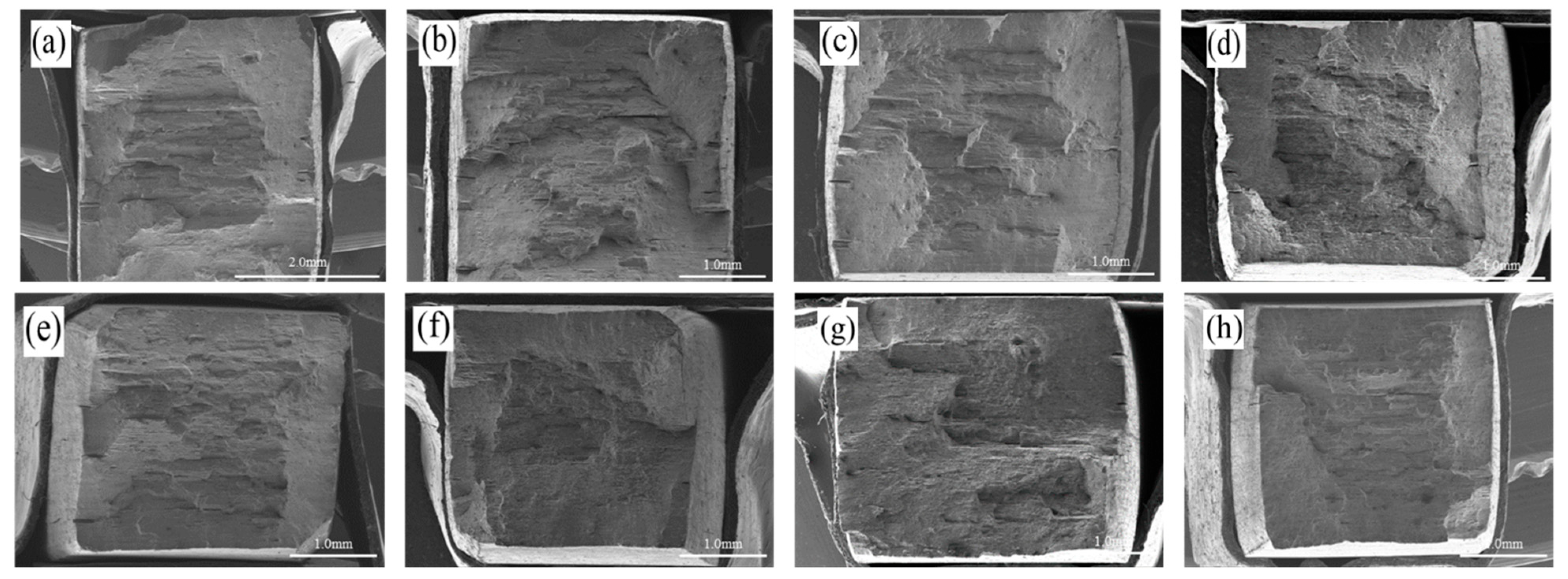
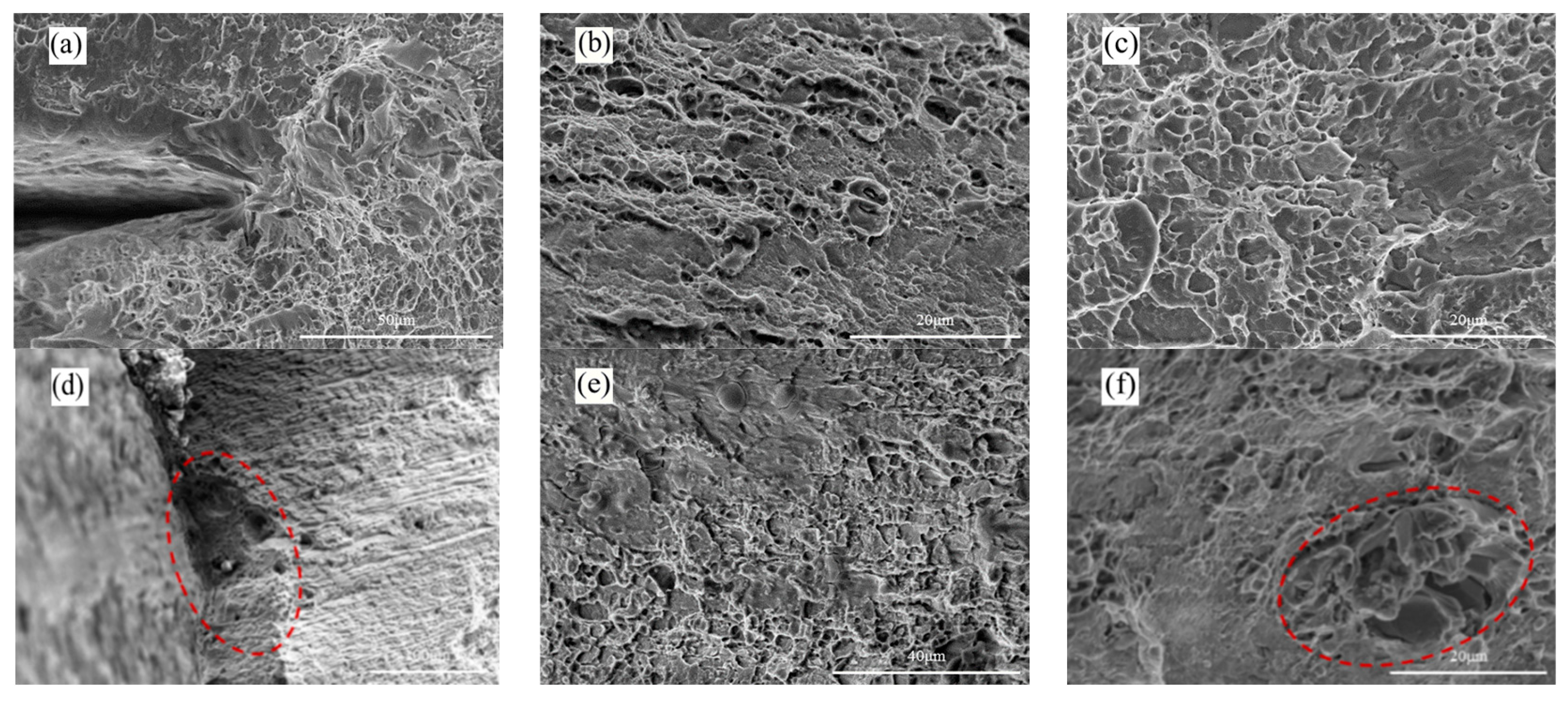
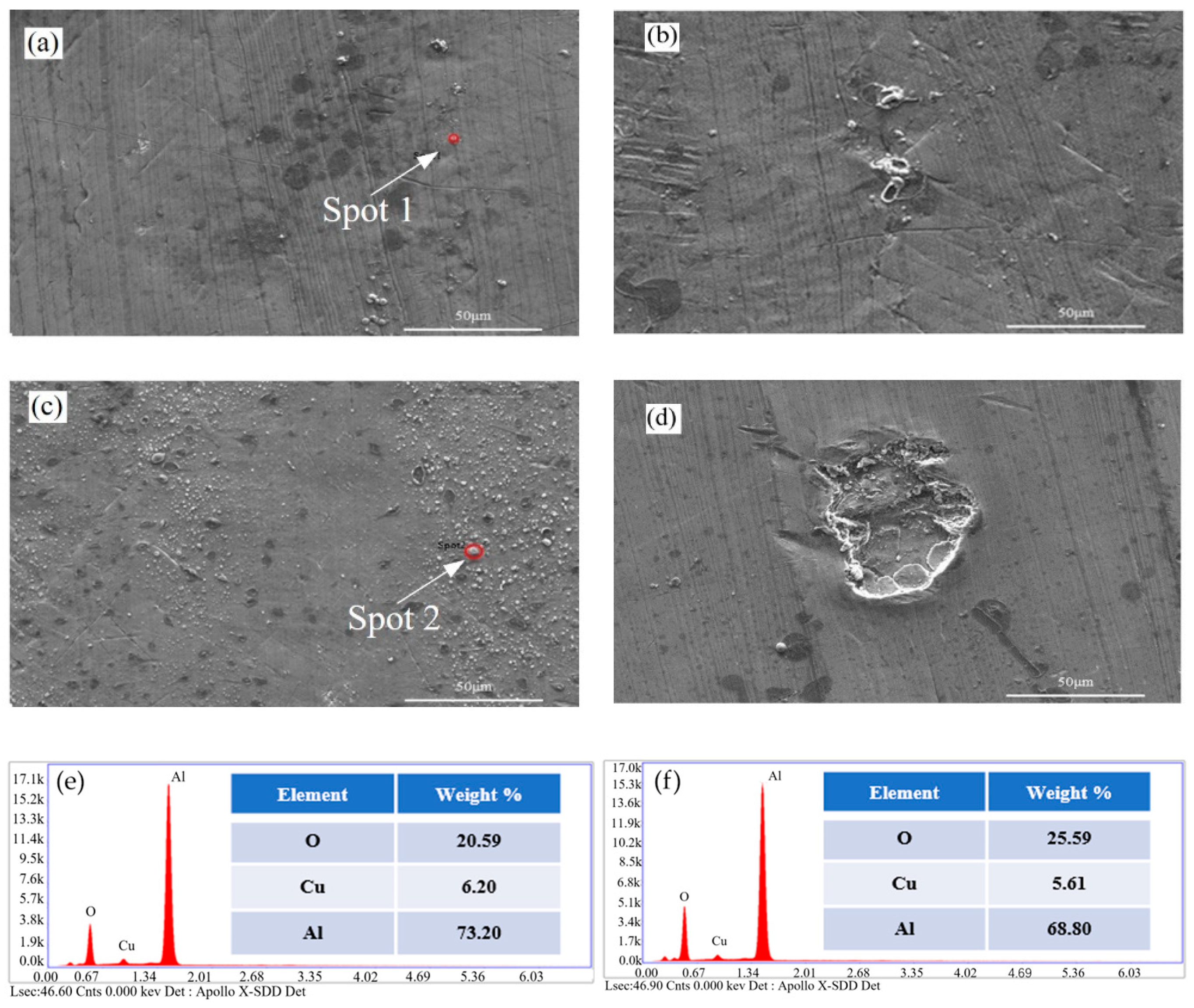



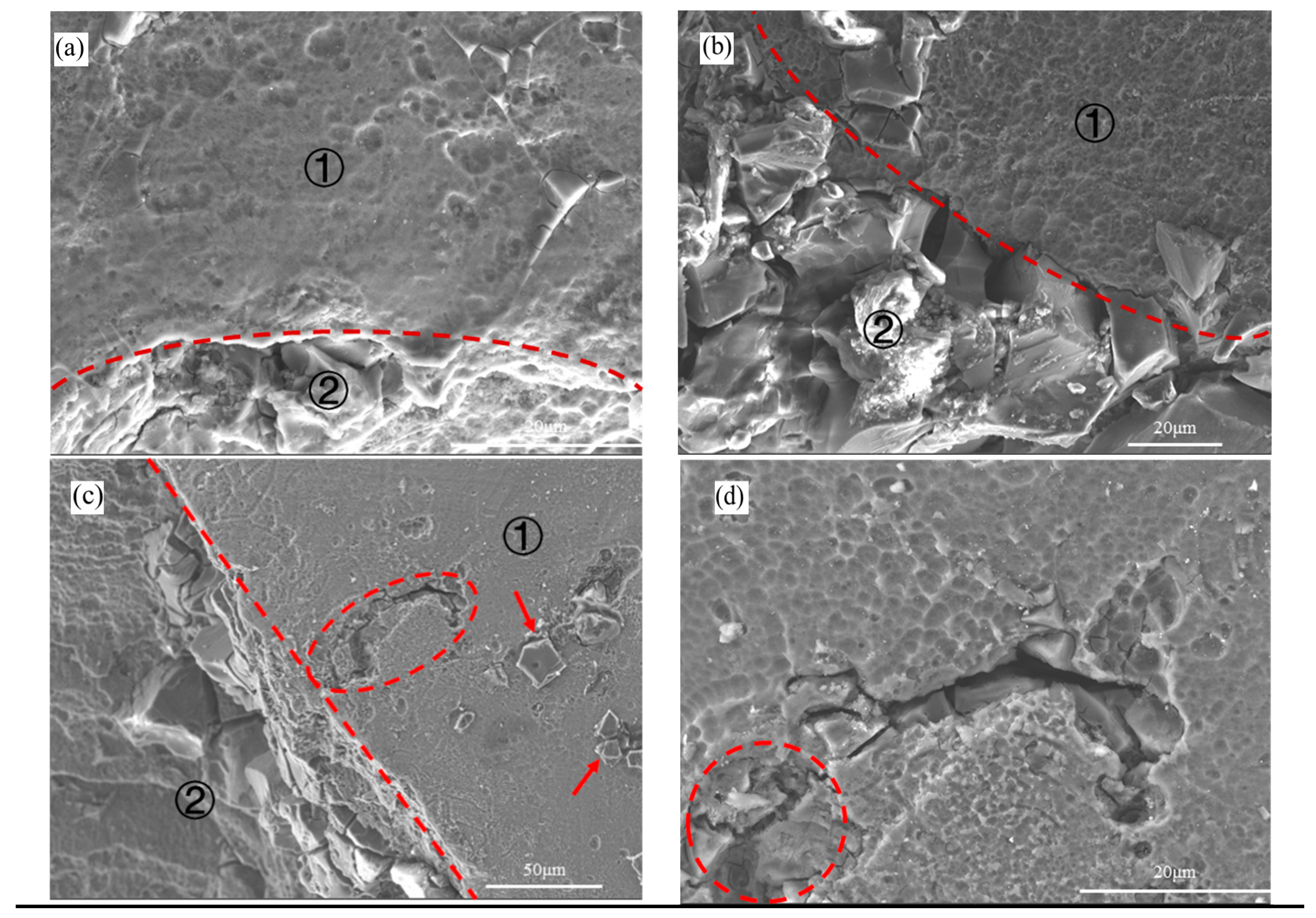
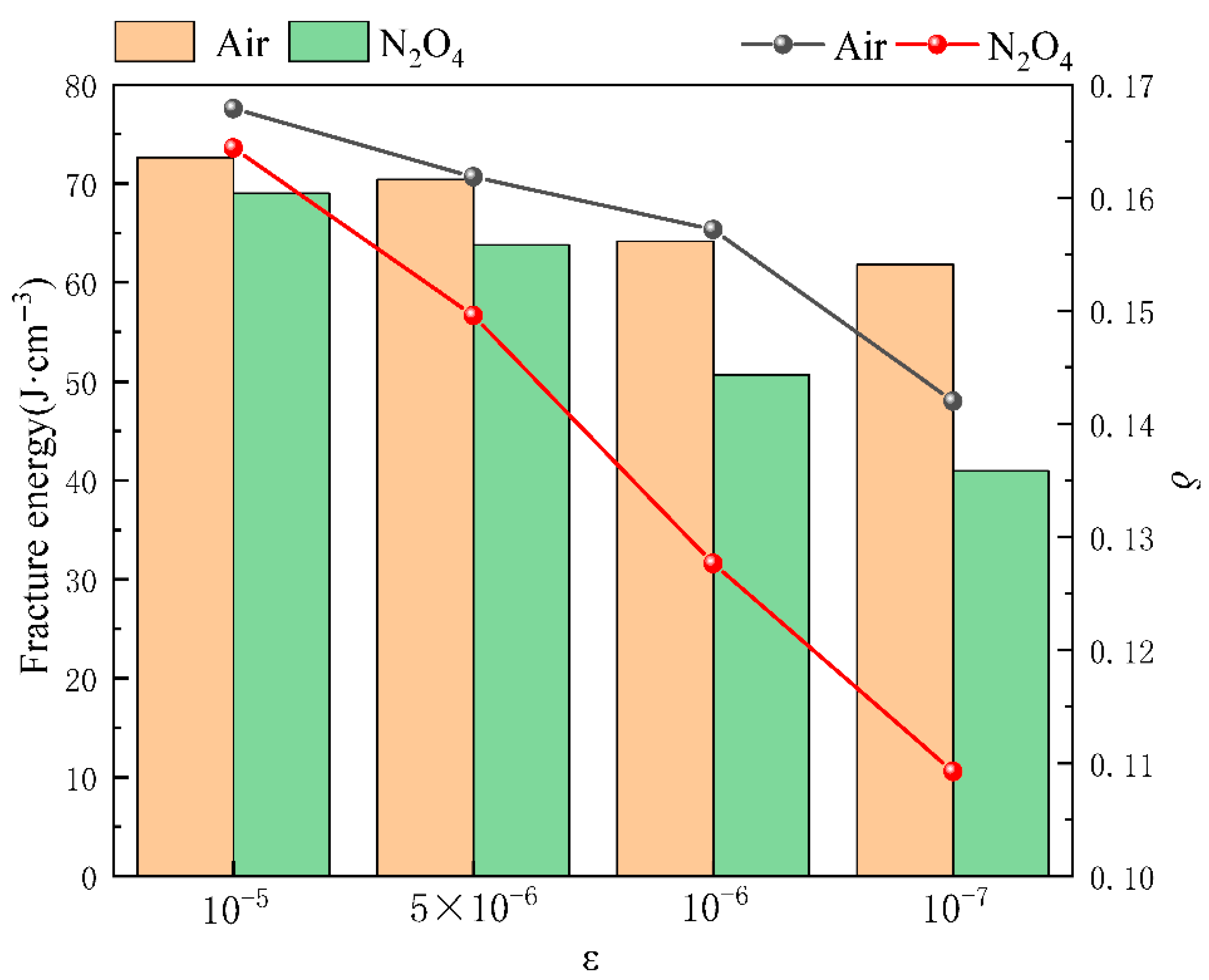


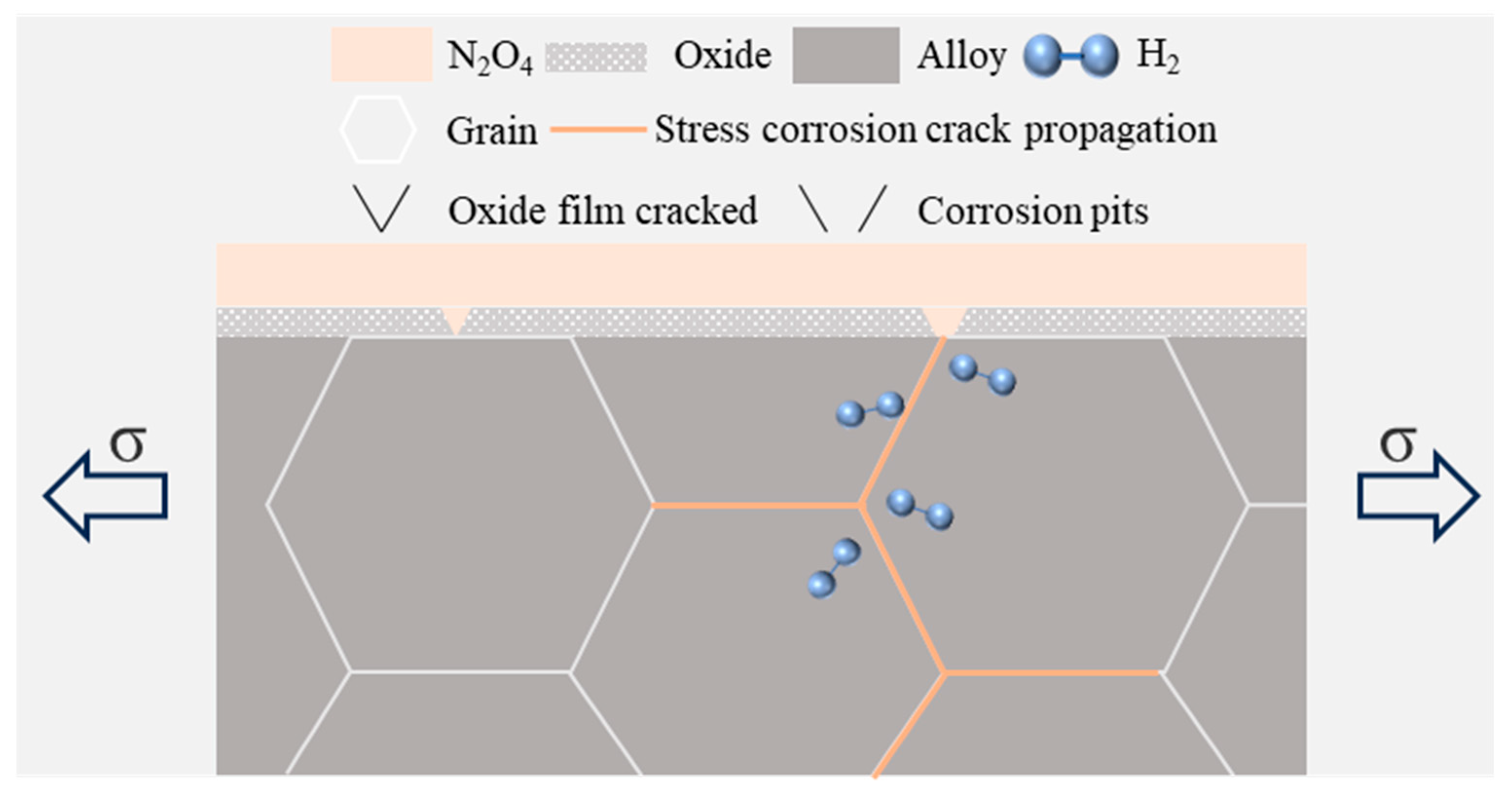
| Material | 2195-T8 |
|---|---|
| Tensile Strength (σb)/MPa | 609.90 |
| Yield Strength (σs)/MPa | 583.33 |
| Elongation (δ) | 11.4 |
| Elastic Modulus (E)/GPa | 72.29 |
| ω(H2O) | 0.6% | 1% | 2% | 4% | 6% | 8% |
|---|---|---|---|---|---|---|
| Icorr(A/cm2) | / | 8.299 × 10−7 | 1.886 × 10−6 | 2.680 × 10−4 | 3.936 × 10−4 | 3.815 × 10−3 |
Disclaimer/Publisher’s Note: The statements, opinions and data contained in all publications are solely those of the individual author(s) and contributor(s) and not of MDPI and/or the editor(s). MDPI and/or the editor(s) disclaim responsibility for any injury to people or property resulting from any ideas, methods, instructions or products referred to in the content. |
© 2025 by the authors. Licensee MDPI, Basel, Switzerland. This article is an open access article distributed under the terms and conditions of the Creative Commons Attribution (CC BY) license (https://creativecommons.org/licenses/by/4.0/).
Share and Cite
Zhao, Y.; Tian, G.; Liu, D.; Ren, B.; Zhang, W.; Zhu, Y. Evaluation of Stress Corrosion Cracking Susceptibility of 2195-T8 Al-Li Alloy in Propellant Environment Using Slow Strain Rate Testing. Aerospace 2025, 12, 830. https://doi.org/10.3390/aerospace12090830
Zhao Y, Tian G, Liu D, Ren B, Zhang W, Zhu Y. Evaluation of Stress Corrosion Cracking Susceptibility of 2195-T8 Al-Li Alloy in Propellant Environment Using Slow Strain Rate Testing. Aerospace. 2025; 12(9):830. https://doi.org/10.3390/aerospace12090830
Chicago/Turabian StyleZhao, Yilin, Gan Tian, Dejun Liu, Biyun Ren, Wei Zhang, and Yafeng Zhu. 2025. "Evaluation of Stress Corrosion Cracking Susceptibility of 2195-T8 Al-Li Alloy in Propellant Environment Using Slow Strain Rate Testing" Aerospace 12, no. 9: 830. https://doi.org/10.3390/aerospace12090830
APA StyleZhao, Y., Tian, G., Liu, D., Ren, B., Zhang, W., & Zhu, Y. (2025). Evaluation of Stress Corrosion Cracking Susceptibility of 2195-T8 Al-Li Alloy in Propellant Environment Using Slow Strain Rate Testing. Aerospace, 12(9), 830. https://doi.org/10.3390/aerospace12090830





